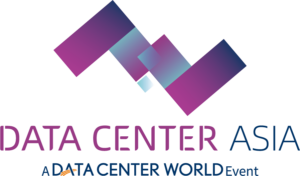Data centers offer physical control and dedicated resources, while cloud services provide scalability, flexibility, and reduced upfront costs. The right balance depends on workload requirements, compliance, latency needs, and budget, often resulting in a hybrid approach that leverages both on-premises and cloud infrastructure.

Join Data Center Asia Malaysia 2025
Data Center Asia Malaysia 2025 is your gateway to Southeast Asia’s dynamic data center market. Connect with operators, cloud providers, and technology innovators, attend practical seminars, and explore solutions in energy efficiency, AI, and 5G to accelerate your digital initiatives.Secure your spot as a visitor or exhibitor!
Understanding the Key Differences between Data Center vs Cloud
- On-Premises Data Centers give you complete control over your infrastructure. You own the hardware, manage the environment, and have direct access to your systems. This means predictable costs over time, maximum customization, and no dependency on internet connectivity for local operations.
- Cloud Services offer scalability and flexibility without upfront capital investment. You pay for what you use, can scale resources instantly, and benefit from the provider’s expertise in security and maintenance. However, you’re dependent on internet connectivity and have less control over the underlying infrastructure.
Factors to Consider for Your Balance
- Workload Characteristics: Applications with predictable, steady workloads often run more cost-effectively on-premises long-term. Variable or seasonal workloads typically benefit from cloud elasticity. Mission-critical systems that require guaranteed performance might need on-premises control.
- Compliance and Security Requirements: Highly regulated industries like healthcare or finance may require on-premises data centers for certain sensitive data, while using cloud for less critical applications. Some compliance frameworks actually favor cloud providers’ advanced security capabilities.
- Cost Analysis: Compare total cost of ownership over 3-5 years. On-premises requires significant upfront investment but can be cheaper long-term for stable workloads. Cloud has lower initial costs but can become expensive at scale with consistent high usage.
- Technical Expertise: Managing data centers requires specialized staff for maintenance, security, and updates. If you lack this expertise, cloud services provide professional management, though you still need skills for cloud architecture and governance.
Common Hybrid Approaches
Many organizations adopt a hybrid cloud strategy, keeping core business applications and sensitive data on-premises while using cloud for development environments, backup storage, and seasonal capacity bursts. Others use multi-cloud approaches, leveraging different cloud providers for different services to avoid vendor lock-in.
Edge computing is another consideration – placing smaller data centers closer to users for low-latency applications while connecting to centralized cloud resources for processing and storage.
The optimal balance depends on your specific business needs, technical requirements, budget constraints, and risk tolerance. Most successful organizations start with a clear assessment of their current and future needs, then gradually migrate workloads to the most appropriate environment rather than making wholesale changes all at once.
Conclusion
Finding the right balance between on-premises data centers and cloud services requires careful consideration of workload patterns, compliance and security needs, costs, and technical expertise. While on-premises infrastructure offers control and predictability, cloud solutions provide scalability, flexibility, and reduced upfront investment. Most organizations achieve optimal results through a hybrid or multi-cloud strategy, keeping critical and sensitive workloads on-premises while leveraging the cloud for elastic capacity, development, and backup. The key is a tailored approach that aligns with business objectives, technical requirements, and long-term growth.
